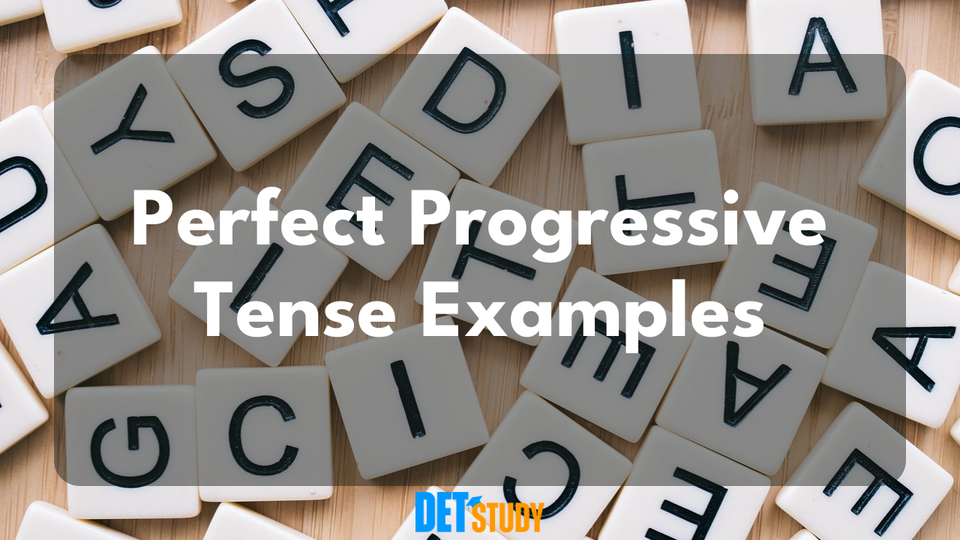El Perfecto Progresivo: Claves y Ejemplos para Potenciar tu Redacción

Tiempo Perfecto Progresivo: Una Guía Completa
Introducción al Tiempo Perfecto Progresivo
El perfecto progresivo, también conocido como el tiempo perfecto continuo, combina aspectos perfectos y progresivos. Describe una acción que comenzó en el pasado, continuó durante un tiempo y o bien sigue ocurriendo o sus efectos se sienten ahora. Este tiempo verbal destaca la duración o la naturaleza continua de una actividad. ⏳
Formaciones y Usos Clave:
- Tiempo Presente Perfecto Progresivo: (Describe acciones en curso desde el pasado, relevantes ahora.)
Ejemplos: - "She has been studying for three hours." - "They have been playing soccer since 2 PM."
- Tiempo Pasado Perfecto Progresivo: (Describe acciones en curso en el pasado antes de otro evento pasado.)
Ejemplos: - "I had been working for five years when I got promoted." - "By the time we arrived, they had been waiting for over an hour."
- Tiempo Futuro Perfecto Progresivo: (Describe acciones en curso antes de un evento o momento futuro.)
Ejemplos: - "By next year, she will have been living here for a decade." - "We will have been traveling for 10 hours by the time we reach our destination."
Recuerda: Estos tiempos verbales enfatizan la duración de una acción y cómo impacta otros eventos a lo largo del tiempo. Practica con expresiones de tiempo como "for", "since" y "by" para mejorar la fluidez. 🚀
Practicar estos tiempos verbales con ejercicios y ejemplos de conversación puede ayudar a construir la comprensión y la fluidez en inglés. Es beneficioso asociarlos con expresiones de tiempo como "for", "since", "by" y "until" para reforzar su uso.
Ahorra Dinero en Tu Duolingo English Test con el Código de Cupón OficialComprendiendo la Estructura del Tiempo Perfecto Progresivo
Para comprender el tiempo perfecto progresivo, examinaremos cada forma. Combina los aspectos perfectos y continuos para mostrar la duración de una acción a lo largo del tiempo. Cada tiempo verbal utiliza "have/has/had/will have been" más un verbo terminado en "-ing".
Tiempo Presente Perfecto Progresivo
- Estructura:
have/has been+ verb-ing - Uso: Para acciones que comenzaron en el pasado y continúan ahora, o tienen efectos en el presente.
Ejemplos: - "I have been reading this book for two weeks." - "She has been learning French since January." - "They have been working on the project all day."
Tiempo Pasado Perfecto Progresivo
- Estructura:
had been+ verb-ing - Uso: Para acciones en curso en el pasado, que se detuvieron antes de que ocurriera otro evento pasado.
Ejemplos: - "He had been jogging every morning until he moved away." - "We had been discussing the plan for hours before we agreed." - "She had been working at the bakery for a year before her new job."
Tiempo Futuro Perfecto Progresivo
- Estructura:
will have been+ verb-ing - Uso: Para acciones que continuarán hasta un punto o evento futuro específico.
Ejemplos: - "By next summer, I will have been studying at the university for three years." - "In December, he will have been working there for a decade." - "They will have been volunteering at the shelter for a month by the time we visit."
Este tiempo verbal conecta el inicio de una acción, su duración continua y su relevancia para el presente o el futuro. Dominarlo ayuda a expresar relaciones temporales complejas y acciones continuas en varios contextos. ¡La práctica hace la perfección! ✨
Ejemplos del Tiempo Presente Perfecto Progresivo
Este tiempo verbal describe acciones del pasado que aún están en curso o tienen relevancia actual. Utiliza "have/has been" + verb-ing.
Practice English NowEjemplos:
-
"I have been studying for my exams all week."
-
"She has been playing the piano since she was six years old."
-
"They have been working on this project for several months."
-
"We have been waiting for the bus for forty minutes."
-
"The kids have been enjoying the summer camp this week."
-
"He has been running every morning."
-
"You have been doing great work this year."
Cómo se Usa con Expresiones de Tiempo:
Este tiempo verbal a menudo usa "for" (duración) y "since" (punto de inicio) para enfatizar la continuidad del pasado al presente. "Lately" también indica acciones recientes y frecuentes.
- "For" indica duración:
"I have been watching TV for three hours."
-
"Since" señala el momento de inicio:
-
"She has been wearing glasses since she was a child."
-
"Lately" para acciones recientes y frecuentes:
- "He has been sleeping poorly lately."
El uso eficaz de este tiempo verbal destaca las acciones continuas y relevantes y su duración, añadiendo profundidad a la comunicación. La práctica ayuda a internalizar su uso. 👍

Ejemplos del Tiempo Pasado Perfecto Progresivo
Este tiempo verbal describe acciones en curso en el pasado, completadas antes de otra acción o momento pasado. Enfatiza la duración, usando "had been" + verb-ing.
Ejemplos:
-
"I had been studying for hours before the power went out."
-
"She had been living in Paris for a year when she got the job offer."
-
"They had been arguing about the new policy until they reached an agreement."
-
"We had been waiting at the bus stop for thirty minutes before the bus arrived."
-
"By the time Mark arrived, we had been cooking for two hours."
-
"The children had been playing outside when it started to rain."
-
"He had been reading a novel before the class started."
Uso con Expresiones de Tiempo:
Este tiempo verbal usa expresiones como "before", "when", "by the time" y "until" para mostrar la duración y continuidad de una acción pasada.
- "Before" indica interrupción:
-
"She had been practicing before the concert began."
-
"Until" señala continuación:
-
"We had been waiting until the guests arrived."
-
"By the time" enfatiza un punto final:
- "By the time he called, I had been pondering over the issue for hours."
Dominar este tiempo verbal y sus expresiones de tiempo mejora la capacidad de describir secuencias y duraciones de acciones pasadas, enriqueciendo el flujo narrativo. 📖
Ejemplos del Tiempo Futuro Perfecto Progresivo
Este tiempo verbal describe una acción en curso que continuará hasta un punto futuro, enfatizando su duración. Se forma con "will have been" + verb-ing.
Free English PracticeEjemplos:
-
"By next month, I will have been working here for five years."
-
"She will have been studying for three hours by the time her friends arrive."
-
"They will have been traveling for 48 hours by the time they reach their destination."
-
"We will have been living in the city for a decade before we consider moving."
-
"By next spring, the organization will have been operating for half a century."
-
"He will have been training for the marathon for six months by race day."
Uso con Expresiones de Tiempo:
Las expresiones de tiempo como "by", "for" y "when" resaltan la duración hasta un punto futuro.
- "By" marca la finalización de una acción en curso en un punto futuro:
-
"By the end of the year, I will have been saving money for a new car."
-
"For" especifica la duración de la acción:
-
"He will have been playing the guitar for ten years by the time he joins the band."
-
"When" introduce una acción futura después de la que está en curso:
- "When the project launches, I will have been working on it for over a year."
Comprender este tiempo verbal ayuda a comunicar escenarios futuros con precisión, especialmente para acciones que conducen a hitos. La práctica ayuda a la fluidez en la conversación y la escritura, añadiendo claridad. 📈
DET Study ofrece un amplio conjunto de más de 15,000 preguntas de práctica, centrándose en el uso de adjetivos y adverbios para fortalecer tus habilidades gramaticales. La práctica regular con estos materiales específicos asegura que te acerques al Duolingo English Test con mayor confianza y precisión, listo para alcanzar tus puntuaciones deseadas.
🎯 ¿Necesitas más práctica? Visita DETStudy.com para obtener recursos expertos, más de 15,000 preguntas de práctica y retroalimentación de escritura y habla impulsada por IA.

